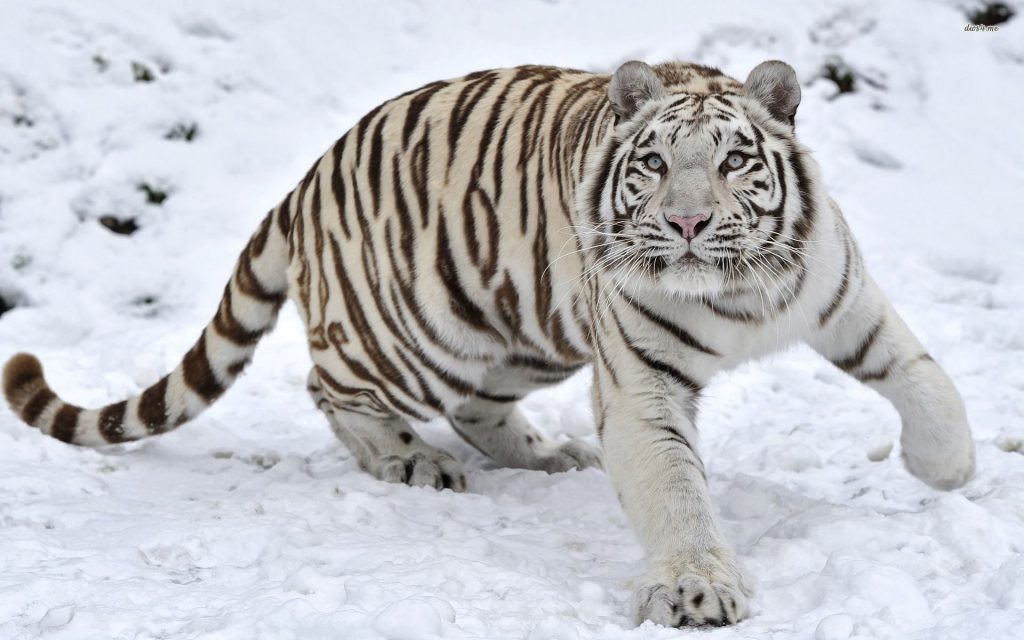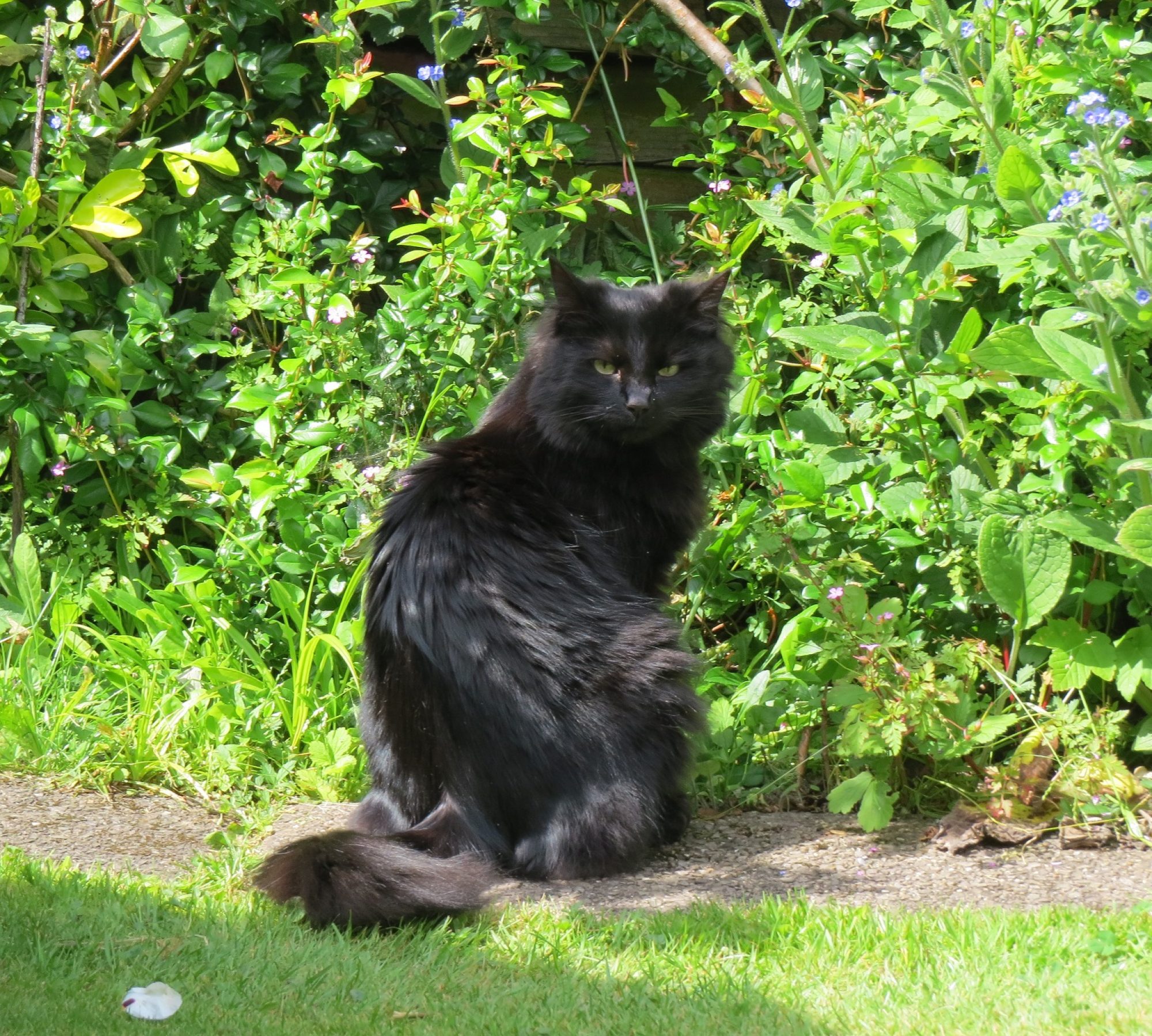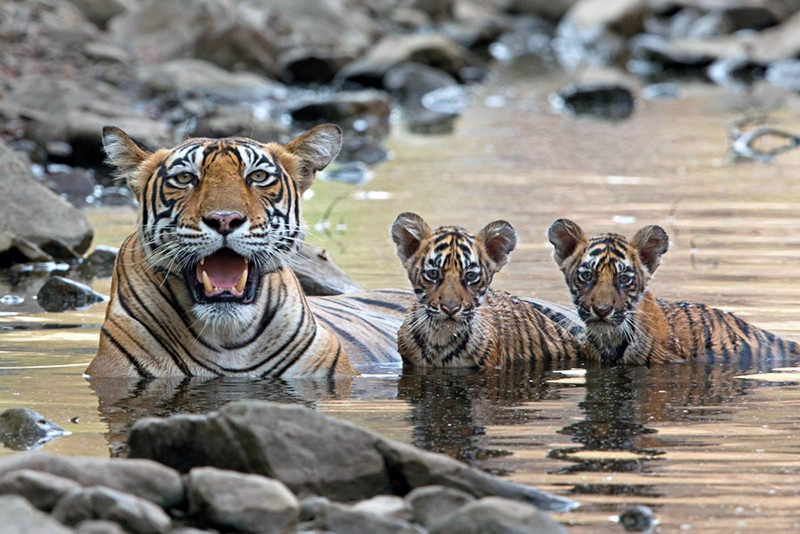The agile and stocky Highlander Cat (known originally as the Highland Lynx or Highlander Shorthair), is an experimental breed of cat
derived from the Desert Lynx and the Jungle Curl breeds. The Jungle Curl itself is a new breed of feline derived from ‘wild cat’ ancestry –
namely two Asian small cat species, the Leopard cat and the Jungle cat). No wonder then that the Highlander was bred to look like a ‘Big Cat’
in minature.
Cat of the Month ~ July 2018
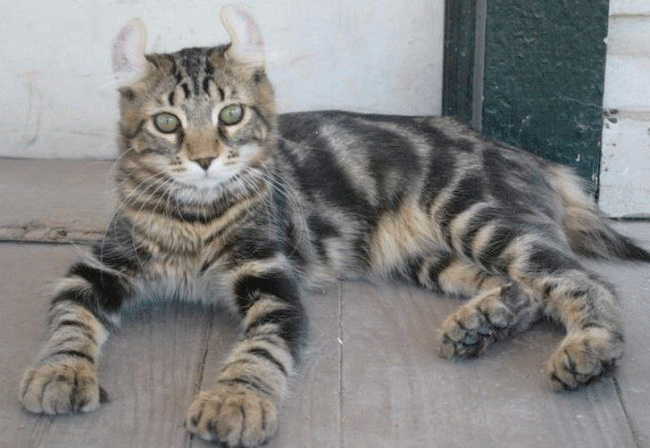
Photograph: http://www.animalzoo.ro
In ‘expert’ speak the highlander is a ‘feline hybrid’ or ‘cross’ between Felis catus × F. chaus X Prionailurus bengalensis).
According to the main breeder, the Highlander breed refinements began in 2004, with the aim of:
- ‘producing a domestic cat with the look of a big cat’
- ‘providing a means to distinguish the breed from its foundation stock’
- ‘to seek competition status in major breed registries’
The name Highlander was adopted in late 2005, and by May 2008 the breed was recognized by The International Cat
Association (TICA) for competition in the ‘Preliminary New Breed’ class, moving up to ‘Advanced New Breed’in 2016.
TICA divides Highlanders into two varities, under the names Highlander Shorthair (HGS) and simply Highlander (HG) for the longer-haired variation.
The breed is now classified by REFR (Rare and Exotic
Feline Registry) as part of the Desert Lynx breeding group, which also includes the Desert Lynx, the Alpine Lynx, and the Mojave Bob.
Though the Highlander is mainly of domestic stock origin it has distinct features from its composite breeds,
for example the curled ears and the bobbed tail. The curled ears are of course from the Jungle Curl cat whilst the
bobbed tail is from the Desert Lynx. In addition these cats have spotted or marbled markings, and do resemble
a small bobcat. A further unusual feature of these cats is the Polydactyl claws in which an extra and separate toes grows on each paw.

Photograph: canyonshadowhighlanders.com
The Highlander has a long sloping forehead and blunt muzzle with a very wide nose. The eyes are wide-set and the ears
are upright with a slight curl and a slight backward lilt. A strange feature whihc some of these cats posess is
polydactyl paws whihc can be described as a prominent split between toes.
Highlanders have no known health problems, and are fond of water. The body is substantial and very muscular. Females can grow to between 10 and 14 pounds, and the males between 15 and 20 (or about as heavy as a Dachshund). Despite the “big-cat look”, the Highlander is a human-oriented, friendly and playful cat, and very active and confident. The Highlander displays tabby/lynx point or solid point coloration in various colors.
Highlanders might look like minature big cats look but they are very gentle creatures (if any cat can be totally gentle)! Like many cats they are highly energetic and will chase and stalk anything moving. They are also curious and friendly when it comes to meeting human strangers
In January 2019, the TICA board will review the Highlander Breed Group’s request to advance to a Championship Breed.
Finally, for some good highlander footage (and cute~~ commentary heres a little video made in the USA by Cats101
Maya finds a home
The story goes that Maya the Cat was found behind a Chinese food restaurant and then taken to an animal shelter to be put down.
The reason being that Maya doesn’t look like other cats and it was thought she would never find a real home and never be adopted by anyone.
Maya has a chromosomal abnormality that has caused her features to have been changed so she can look strange to those who are used to seeing cats in a particular way.
The good news is that with the help of an organisatiopn called ‘The Odd Cat Sanctuary’ Maya was not only saved from being euthanized but was eventually found a permanant home too.
Lauren and Harrison have now given Maya a new home. When questioned in a media interview Lauren said “Maya is pretty tiny (8 lbs tops), but she’s got huge feet and whiskers.”
“Maya’s just like any cat,” says Harrison. “She’s of smaller stature, and some think she will be more kitten-like forever. She has slight vision issues (she is cross-eyed, after all), and due to her nasal structure, she tends to get stuffy a lot. It’s actually adorable. Every time she gets out-of-breath, she sneezes like 15 times in a row.”
See all the cats currently listed on the Odd Cat Sanctuary website.
So best wishes to Maya (Lauren & Harrison) and may the great work of ‘The Odd Cat Sanctuary continue.
Five Kittens Found
Five six-week-old kittens were found abandoned in a Moses basket in Ashford, Surrey last Monday afternoon.
The black and white kittens are now being cared for at RSPCA Millbrook Animal Centre, in Chobham, until they’re old enough to be rehomed.
They’ve been named after current rappers Kanye (West), Kendrick (Lamar), Kadi, Nicki (Minaj) and Gerald (G-Eazy).
RSPCA animal welfare officer Carl Hone said they were too young to have been taken from their mother, but were “thankfully all healthy and seem well”.
He said “there was always a huge influx of kittens every summer because there were so many unneutered pet cats and stray cats”.
Mr Hone urged owners to get their cats neutered to avoid any unwanted litters and extra pressure on animal charities and rescue centres.
RSPCA posters have been put up in the area appealing for the owner of the kittens to come forward.
Article Source: BBC
The Bengal Tiger
The magnificent, strong and charismatic Bengal Tiger is found primarily in India. It is the most numerous of all tiger subspecies, with more than 2,500* left in the wild.
Small numbers of Bengals are also found in Bangladesh, Nepal, Bhutan, China and Myanmar.
Cat of the Month ~ April 2018
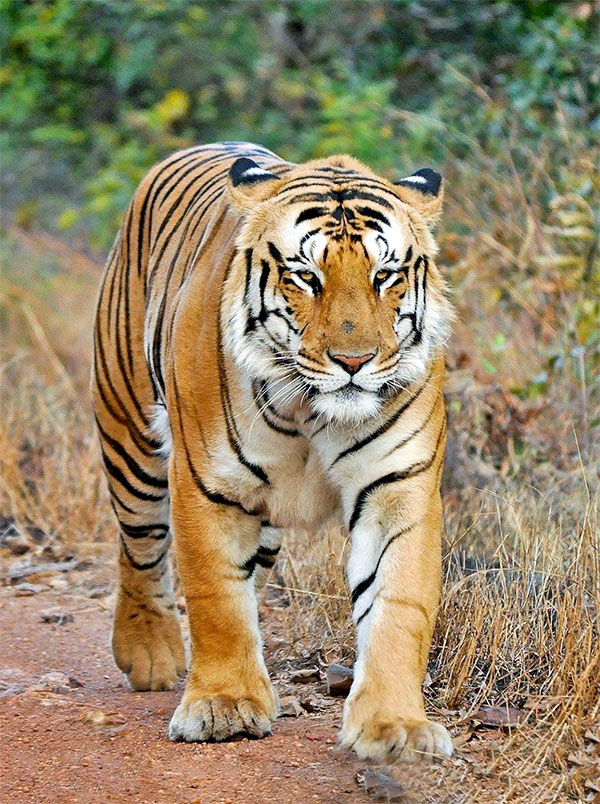
Photograph: ©Unknown, from the imgur.com website
Since April 1973 The Bengal Tiger has been the national animal of both India and Bangladesh (so declared with the initiation of ‘Project Tiger’, a scheme to protect the tigers in India). Prior to this, the Lion was the national animal of India.
Project Tiger saw the creation of India’s many tiger reserves and helped to stabilize a serious decline in numbers. Sadly, poaching and loss of habitat are still major threats to this endagered feline.
It has been shown that the Bengal tiger arrived in the Indian subcontinent around 12,000 years ago, but it still ranks among the biggest wild cats alive today.
Male Bengals have an average total length of 270 to 310 cm including the tail, while females measure 240 to 265 cm on average. The tail is typically 85 to 110 cm long, and on average, tigers are 90 to 110 cm in height at the shoulders. The weight of males ranges from 180 to 258 kg (397 to 569 lb), while that of the females ranges from 100 to 160 kg (220 to 350 lb). Thus, the Bengal tiger rivals the Amur tiger in average weight. The smallest recorded weights for Bengal tigers are from the Bangladesh Sundarbans, where adult females are 75 to 80 kg (165 to 176 lb).
The tiger has exceptionally large teeth. Its canines are 7.5 to 10 cm long and are in fact the longest amongst all cats of the world.
India’s upcoming ‘All India Tiger Estimation 2018’ is a hi-tech initiative to estimate the number of tigers across the country.
The survey is the fourth of its kind and will provide data based on the results of using an Android smart phone App. The plan is to digitize data records and eliminate the (previously) manual process of recording, which is slow and known to be prone to errors. The Wildlife Institute of India (WII) developed the app and named it ‘Monitoring System for Tiger-Intensive Protection and Ecological Status’ or M-STrIPES.
In the Indian subcontinent, tigers inhabit tropical moist evergreen forests, tropical dry forests, moist deciduous forests, mangroves, subtropical and temperate upland forests and alluvial grasslands. Today, the best examples of this habitat type are limited to a few areas at the base of the outer foothills of the Himalayas including the Tiger Conservation Units (TCUs) of Rajaji-Corbett, Bardia-Banke, and the transboundary TCUs Chitwan-Parsa-Valmiki, Dudhwa-Kailali and Shuklaphanta-Kishanpur. Tiger densities in these TCUs are high, in part because of the extraordinary abundance of prey species available.
The Bengal tigers in the Sundarbans in India and Bangladesh are the only tigers in the world inhabiting mangrove forests. The population in the Indian Sundarbans is estimated as 70 tigers in total. In addition to the Indian and Bangladesh tiger populations, other notable populations are to be found in Bhutan and Nepal regions.
The basic social unit of the tiger is the elemental one of mother and offspring. Adult animals congregate only on an occasional and transitory basis when special conditions permit, such as plentiful supply of food. Otherwise they lead solitary lives, hunting individually for the dispersed forest and tall grassland prey animals. They establish and maintain home ranges but must always have access to other tigers (especially those of the opposite sex). Tigers sharing the same ground are well aware of each other’s movements and activities.
The tiger is a carnivore. It prefers hunting large ungulates such as chital, sambar, gaur, and to a lesser extent also barasingha, water buffalo, nilgai, serow and takin. Among the medium-sized prey species it frequently kills wild boar, and occasionally hog deer, muntjac and grey langur. Small prey species such as porcupine, hares and peafowl form a very small part in its diet. Because of the encroachment of humans into tiger habitat, it also preys on domestic livestock.
The nature of the tiger’s hunting method and prey availability results in a “feast or famine” feeding style: they often consume 18–40 kilograms (40–88 lb) of meat at one time.
Bengal tigers occasionally hunt and kill predators such as Indian leopard, Indian wolf, Indian jackal, fox, crocodiles, Asiatic black bear, sloth bear, and dhole. They rarely attack adult Indian elephant and Indian rhinoceros, but such extraordinarily rare events have been recorded. In Kaziranga National Park, tigers killed 20 rhinoceros in 2007. If injured, old or weak, or regular prey species are becoming scarce, tigers also attack humans and become man-eaters.
The tiger in India has no definite mating and birth seasons. Most young are born in December and April. Young have also been found in March, May, October and November. In the 1960s, certain aspects of tiger behaviour at Kanha National Park indicated that the peak of sexual activity was from November to about February, with some mating probably occurring throughout the year.
Males reach maturity at 4–5 years of age, and females at 3–4 years. A Bengal comes into heat at intervals of about 3–9 weeks, and is receptive for 3–6 days. After a gestation period of 104–106 days, 1–4 cubs are born in a shelter situated in tall grass, thick bush or in caves. Newborn cubs weigh 780 to 1,600 g (1.72 to 3.53 lb) and they have a thick wooly fur that is shed after 3.5–5 months. Their eyes and ears are closed. Their milk teeth start to erupt at about 2–3 weeks after birth, and are slowly replaced by permanent dentition from 8.5–9.5 weeks of age onwards. They suckle for 3–6 months, and begin to eat small amounts of solid food at about 2 months of age. At this time, they follow their mother on her hunting expeditions and begin to take part in hunting at 5–6 months of age. At the age of 2–3 years, they slowly start to separate from the family group and become transient — looking out for an area, where they can establish their own territory. Young males move further away from their mother’s territory than young females. Once the family group has split, the mother comes into heat again.
They occupied home ranges of 16 to 31 km2 (6.2 to 12.0 sq mi).
The home ranges occupied by adult male residents tend to be mutually exclusive, even though one of these residents may tolerate a transient or sub-adult male at least for a time. A male tiger keeps a large territory in order to include the home ranges of several females within its bounds.
Threats
Over the past century tiger numbers have fallen dramatically, with a decreasing population trend. None of the Tiger Conservation Landscapes within the Bengal tiger range is large enough to support an effective population size of 250 individuals. Habitat losses and the extremely large-scale incidences of poaching are serious threats to the species’ survival.
The most significant immediate threat to the existence of wild tiger populations is the illegal trade in poached skins and body parts between India, Nepal and China. The governments of these countries have failed to implement adequate enforcement response, and wildlife crime remained a low priority in terms of political commitment and investment for years. There are well-organised gangs of professional poachers, who move from place to place and set up camp in vulnerable areas. Skins are rough-cured in the field and handed over to dealers, who send them for further treatment to Indian tanning centres.
The illicit demand for bones and body parts from wild tigers for use in Traditional Chinese medicine is the reason for the unrelenting poaching pressure on tigers on the Indian subcontinent. For at least a thousand years, tiger bones have been an ingredient in traditional medicines that are prescribed as a muscle strengthener and treatment for rheumatism and body pain.[69]
Human and tiger confrontations have been common on the Indian Subcontinent for many years. At the beginning of the 19th century tigers were so numerous it seemed to be a question as to whether man or tiger would survive. At this time it became the official policy to encourage the killing of tigers as rapidly as possible, rewards being paid for their destruction in many localities. In the latter half of the 19th century, marauding tigers began to take a toll of human life. These animals were pushed into marginal habitat, where tigers had formerly not been known, or where they existed only in very low density.
More recently in the Sundarbans region (for example), 10 out of 13 man-eaters recorded in the 1970s were males, and they accounted for 86% of the victims. These man-eaters have been grouped into the confirmed or dedicated ones who go hunting especially for human prey; and the opportunistic ones, who do not search for humans but will, if they encounter a man, attack, kill and devour him. Between 1999 and 2001, the highest concentration of tiger attacks on people occurred in the northern and western boundaries of the Bangladesh Sundarbans. Most people were attacked in the mornings while collecting fuel wood, timber, or other raw materials, or while fishing.
Conservation
The Bengal Tiger has been listed as Endangered on the IUCN Red List Since 2008. It is threatened by poaching, loss of its native habitat due to farming and by construction projects.
An area of special interest lies in the “Terai Arc Landscape” in the Himalayan foothills of northern India and southern Nepal, where 11 protected areas composed of dry forest foothills and tall-grass savannas harbor tigers in a 49,000 square kilometres (19,000 sq mi) landscape. The goals are to manage tigers as a single metapopulation, the dispersal of which between core refuges can help maintain genetic, demographic, and ecological integrity, and to ensure that species and habitat conservation becomes mainstreamed into the rural development agenda. In Nepal a community-based tourism model has been developed with a strong emphasis on sharing benefits with local people and on the regeneration of degraded forests. The approach has been successful in reducing poaching, restoring habitats, and creating a local constituency for conservation.
WWF partnered with Leonardo DiCaprio to form a global campaign, “Save Tigers Now”, with the ambitious goal of building political, financial and public support to double the wild tiger population by 2022.Save Tigers Now started its campaign in 12 different WWF Tiger priority landscapes, since May 2010.
If you would like to show your concern please sign the petition here.
You just need an email address, and dont need to add your postcode or D.O.B. as requested.
At the time of writing:
Jai the tiger has been reported missing (since July 2016)
The results of the 2018 Tiger Survey have not yet been issued.
Sources: Worldwildlife.org, Indiatimes.com, Wikipedia.org & others
Marmalade Relaxing

Marmalade relaxing after a busy Saint Patrick’s day
Happy Saint Patrick’s Day
Cat Soohorang of PyeongChang
Cat of the Month ~ February 2018
Soohorang the cat is the Olympic Winter Games mascot. He is the Official mascot of the 2018 Winter Olympics (9-25 Feb) and of the Paralympics (9-18 Mar) in PyeongChang, South Korea.

Soohorang, the Olympic mascot, made his debut in July 2017, during Olympic events in both Seoul and PyeongChang. Gunilla Lindberg, Chair of the IOC Coordination Commission for the Olympic Winter Games PyeongChang 2018, said of choosing a white tiger to be the 2018 Olympic mascot,
It’s a beautiful animal, strongly associated with Korean culture. It also symbolises the close link between the Olympic Winter Games and the natural environment. I’m sure the new mascot will be very popular with Koreans and people around the world.
Athletes who win medals at the Pyeongchang Winter Olympics are honored in two separate ceremonies, according to the International Olympic Committee (IOC). The first one happens directly after the event, and is when the athletes get their stuffed tiger….”instead of flowers, medalists are being given a doll of the Games’ mascot Soohorang.” The origin of the motif is the famous (and endangered) South Korean white tiger. The white tiger has been long considered Korea’s guardian animal.
“Sooho”, meaning protection in Korean, symbolises the protection offered to the athletes, spectators and other participants of the 2018 Games.
“Rang” comes from the middle letter of “Ho-rang-i”, the Korean word for “tiger,” and is also the last letter of “Jeong-seon A-ri-rang”,
a cherished traditional folk song of Gangwon Province, where the Games will be held.
Soohorang not only has a challenging spirit and passion, but is also a trustworthy friend who protects the athletes, spectators and all the participants of the Olympic Games.
Well worth being cat of the month then Eh Osc?
And just to round this all off nicely (we hope) here are a few more images relating to our friendly cat Soohorang.
